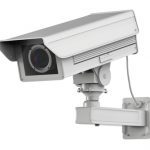The Panopticon is Watching Us All
The panopticon is a prison design comprised of a central observation tower which is surrounded by a circular building containing multiple levels of single inmate cells around the circumference. From the tower, a prison guard is able to observe each of the inmates in their cells.
Although the prison guard is unable to observe every inmate at all times, the inmates are unaware as to when they’re being watched, as the tower is kept dark. The purpose of the design is to ensure all inmates act as if they’re under constant surveillance.
In this way, the panopticon allows authorities to control the behaviour of inmates even when they’re not being observed, as the prisoners quickly become mindful of their actions. The method not only controls the inmate physically, but takes it a step further by controlling them psychologically.
The reformist philosopher
The English philosopher and political radical Jeremy Bentham came up with the concept of the panopticon. The initial idea came to him in 1785 after he paid a visit to his brother, Samuel, in Russia. Samuel was using the central observation method to train and supervise unskilled workers.
Bentham conceived that the panopticon marked “a new mode of obtaining power of mind over mind, in a quantity hitherto without example.” He believed his “simple idea in architecture” could reform morals, preserve health and diffuse instructions.
The philosopher designed the structure to be used in the construction of prisons, but he also thought it could be applied to schools, factories and asylums.
The panopticon in practice
Bentham’s idea was immensely influential on the design of early prisons. But no true panopticon has ever been built. The closest to the original design was the Presidio Modelo in Cuba.
Built in 1926, the Presidio Modelo consisted of five circular buildings with cells lining the walls of the structures, and a central observation tower within each. The correctional facility that held 6,000 inmates was controlled by minimal staff.
The Cuban prison – which once held Fidel Castro – was renowned for its corruption and cruelty, and the last inmate was released in 1967.
Three panopticon prisons were built in the Netherlands in the late 19th century: Breda, Arnhem and Haarlem. A major difference from Bentham’s design was that the walls and doors of the cells were thick, which made the idea of constant surveillance unachievable.
Even Melbourne’s notorious Pentridge prison was influenced by Bentham’s design early on. Archaeologists recently uncovered the foundations of three sections of the prison built in the panopticon style in the 1850s.
Inmates were kept in the solitary confinement of their cells 23 hours a day – only allowed out for one hour to march in an adjacent prison yard with caps over their eyes.
Panopticon prison eventually design fell into disrepute, as the model did little to reform inmates and was actually detrimental to their mental health.
Panoptic power
French philosopher Michel Foucault revitalised the concept of the panopticon in his 1975 work Discipline and Punish: The Birth of the Prison.
For Foucault, the possibility of being under the constant watch of the prison guard, along with the internalisation of this surveillance within the mind of the prisoner, is a metaphor for how power relations and social coercion operate in the modern world.
Foucault wrote that inducing “the state of conscious and permanent visibility” in the mind of the inmate “assures the automatic functioning of power.” This “power should be visible and verifiable,” which makes it unnecessary for the authority to be constantly present, as their power is constantly exercised within the inmate’s mind.
“Disciplinary power” is the term the French philosopher gave to this form of control, which he thought pervades society. Indeed, such power is perpetuated by modern institutions, from the school, to the military and the bureaucracy.
Big brother is watching
Under these institutions, societal norms and expectations are internalised. Public conduct – that which is monitored by others – is thereby carried over into the private realm.
Self-censorship in the media is one such example. Modern journalists will often refrain from publishing the most controversial facts or attitudes for fear- or under threat – that they might upset certain parties and their interests.
However, the most overt form of thought control in modern society is the use of CCTV. These cameras are perched in full view on the corners of buildings, threatening to capture people who are breaking law, but at the same time acting as a deterrent.
Individuals in the vicinity of cameras are constantly reminded that they are under the surveillance of someone in authority. They quickly learn to monitor and regulate their own behaviour, whether or not they are able to detect a camera.
Whether a CCTV camera is actually there or switched on is beside the point, the thought that one may be present is enough to influence the behaviour of most people.
For Foucault, the danger of this constant observation is that it creates a society of conformists, who are too afraid to act as individuals for fear being punished. Ultimately, this “dynamic normalisation” is undemocratic, as it eradicates independent thinking.
The surveillance of cyberspace
It’s well-known that governments, secret services and even big corporations are monitoring people on the internet. Some argue that this sort of surveillance can be differentiated from CCTV cameras and the like because individuals are unaware of it.
After the revelations of the Snowden leaks regarding NSA monitoring, the public has gradually become aware that the sites they’re visiting on the internet, and the information they’re sending and receiving, can be monitored, but there is still a level of anonymity about it in the minds of some.
There’s no CCTV camera dangling off the front of the computer monitor that’s connected to a data system in the depths of some locked down control room at ASIO… or is there?
It seems in the realm of digital surveillance that the watchtower is now completely invisible, while at the same time watching us all.
Receive all of our articles weekly
Authors

Paul Gregoire







